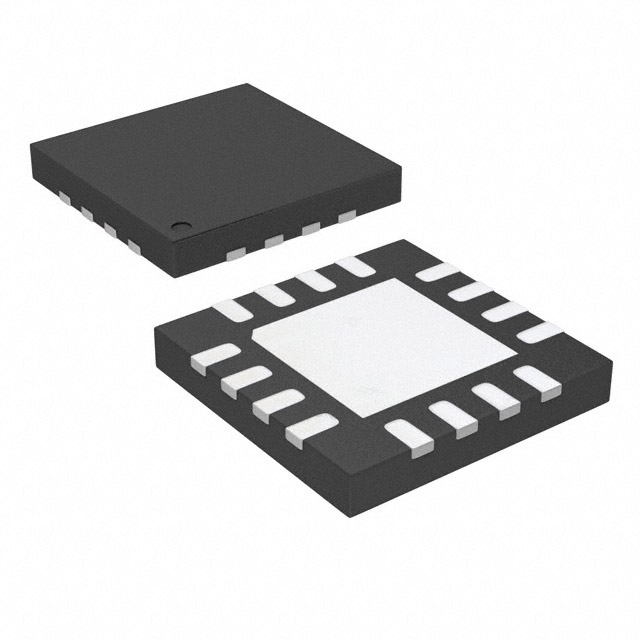Viz Specifikace pro podrobnosti o produktu.

LTC2635CUD-LMO12#TRPBF
Product Overview
Category
The LTC2635CUD-LMO12#TRPBF belongs to the category of digital-to-analog converters (DACs).
Use
This product is used to convert digital signals into analog voltage or current outputs.
Characteristics
- High precision: The LTC2635CUD-LMO12#TRPBF offers high-resolution and low-noise performance, ensuring accurate conversion.
- Wide operating range: It operates over a wide temperature range, making it suitable for various environments.
- Low power consumption: This DAC consumes minimal power, making it energy-efficient.
- Small package size: The LTC2635CUD-LMO12#TRPBF comes in a compact package, allowing for easy integration into different systems.
Package
The LTC2635CUD-LMO12#TRPBF is available in a 10-lead MSOP package.
Essence
The essence of this product lies in its ability to provide precise and reliable digital-to-analog conversion.
Packaging/Quantity
The LTC2635CUD-LMO12#TRPBF is typically packaged in reels and is available in quantities specified by the manufacturer.
Specifications
- Resolution: 12 bits
- Supply Voltage Range: 2.7V to 5.5V
- Output Voltage Range: 0V to VREF
- Operating Temperature Range: -40°C to +85°C
- Integral Nonlinearity (INL): ±1 LSB (max)
- Differential Nonlinearity (DNL): ±1 LSB (max)
Detailed Pin Configuration
The LTC2635CUD-LMO12#TRPBF has the following pin configuration:
- VDD: Power supply input
- GND: Ground reference
- SDA: Serial data input
- SCL: Serial clock input
- A0: Address input bit 0
- A1: Address input bit 1
- A2: Address input bit 2
- REF: Reference voltage input
- VOUT: Analog output
- NC: No connection
Functional Features
- High-resolution digital-to-analog conversion
- I2C-compatible serial interface for easy communication with microcontrollers
- Power-on reset to ensure proper initialization
- Software programmable output range and power-down mode
- Fast settling time for rapid response in dynamic applications
Advantages and Disadvantages
Advantages
- High precision and accuracy
- Wide operating range
- Low power consumption
- Compact package size
- Easy integration with microcontrollers
Disadvantages
- Limited output voltage range (up to VREF)
Working Principles
The LTC2635CUD-LMO12#TRPBF operates by receiving digital input data through the I2C interface. It then converts this digital data into an analog voltage or current output, based on the specified resolution. The reference voltage input (REF) determines the maximum output voltage. The DAC's internal circuitry ensures accurate conversion and low noise performance.
Detailed Application Field Plans
The LTC2635CUD-LMO12#TRPBF finds applications in various fields, including:
- Industrial automation: Used for precise control of analog signals in industrial processes.
- Test and measurement equipment: Provides accurate analog outputs for testing and calibration purposes.
- Audio systems: Enables high-fidelity audio signal generation.
- Communication systems: Used for modulation and demodulation processes.
- Medical devices: Provides precise analog control signals in medical equipment.
Detailed and Complete Alternative Models
- LTC2635CUD-LMO10#TRPBF: Similar to LTC2635CUD-LMO12#TRPBF but with 10-bit resolution.
- LTC2635CUD-LMO14#TRPBF: Similar to LTC2635CUD-LMO12#TRPBF but with 14-bit resolution.
- LTC2635CUD-LMO16#TRPBF: Similar to LTC2635CUD-LMO12#TRPBF but with 16-bit resolution.
These alternative models offer different resolutions to suit specific application requirements.
Word count: 454 words
Seznam 10 běžných otázek a odpovědí souvisejících s aplikací LTC2635CUD-LMO12#TRPBF v technických řešeních
Sure! Here are 10 common questions and answers related to the application of LTC2635CUD-LMO12#TRPBF in technical solutions:
Q: What is LTC2635CUD-LMO12#TRPBF? A: LTC2635CUD-LMO12#TRPBF is a digital-to-analog converter (DAC) chip manufactured by Linear Technology (now part of Analog Devices). It is used to convert digital signals into analog voltages.
Q: What is the voltage range of LTC2635CUD-LMO12#TRPBF? A: The voltage range of LTC2635CUD-LMO12#TRPBF is 0V to VREF, where VREF is the reference voltage provided externally.
Q: How many channels does LTC2635CUD-LMO12#TRPBF have? A: LTC2635CUD-LMO12#TRPBF has 4 independent DAC channels, allowing for simultaneous conversion of multiple digital signals to analog voltages.
Q: What is the resolution of LTC2635CUD-LMO12#TRPBF? A: LTC2635CUD-LMO12#TRPBF has a resolution of 12 bits, meaning it can represent analog voltages with a precision of 1 part in 4096.
Q: What is the interface used to communicate with LTC2635CUD-LMO12#TRPBF? A: LTC2635CUD-LMO12#TRPBF supports an I2C-compatible serial interface, which allows for easy integration with microcontrollers and other digital devices.
Q: Can LTC2635CUD-LMO12#TRPBF operate at high speeds? A: Yes, LTC2635CUD-LMO12#TRPBF can operate at high speeds, with a settling time of typically 4.5µs for a full-scale step.
Q: What is the power supply voltage range for LTC2635CUD-LMO12#TRPBF? A: The power supply voltage range for LTC2635CUD-LMO12#TRPBF is from 2.7V to 5.5V, making it suitable for a wide range of applications.
Q: Can LTC2635CUD-LMO12#TRPBF be used in battery-powered devices? A: Yes, LTC2635CUD-LMO12#TRPBF has a low power consumption and can be used in battery-powered devices, helping to extend battery life.
Q: Does LTC2635CUD-LMO12#TRPBF have built-in reference voltage? A: No, LTC2635CUD-LMO12#TRPBF requires an external reference voltage (VREF) to operate. This allows flexibility in choosing the desired reference voltage.
Q: What are some typical applications of LTC2635CUD-LMO12#TRPBF? A: LTC2635CUD-LMO12#TRPBF is commonly used in various applications such as industrial automation, instrumentation, data acquisition systems, motor control, and audio equipment, where precise analog voltage generation is required.
Please note that the answers provided here are general and may vary depending on specific datasheet specifications and application requirements.

